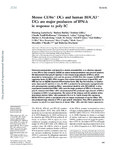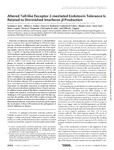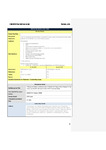Mouse CD8α+ DCs and human BDCA3+ DCs are major producers of IFN-λ in response to poly IC

Date
2010-11-22Author
Subject
Metadata
Show full item recordAbstract
<jats:p>Polyinosinic:polycytidylic acid (poly IC), a double-stranded RNA, is an effective adjuvant in vivo. IFN-λs (also termed IL-28/29) are potent immunomodulatory and antiviral cytokines. We demonstrate that poly IC injection in vivo induces large amounts of IFN-λ, which depended on hematopoietic cells and the presence of TLR3 (Toll-like receptor 3), IRF3 (IFN regulatory factor 3), IRF7, IFN-I receptor, Fms-related tyrosine kinase 3 ligand (FL), and IRF8 but not on MyD88 (myeloid differentiation factor 88), Rig-like helicases, or lymphocytes. Upon poly IC injection in vivo, the IFN-λ production by splenocytes segregated with cells phenotypically resembling CD8α+ conventional dendritic cells (DCs [cDCs]). In vitro experiments revealed that CD8α+ cDCs were the major producers of IFN-λ in response to poly IC, whereas both CD8α+ cDCs and plasmacytoid DCs produced large amounts of IFN-λ in response to HSV-1 or parapoxvirus. The nature of the stimulus and the cytokine milieu determined whether CD8α+ cDCs produced IFN-λ or IL-12p70. Human DCs expressing BDCA3 (CD141), which is considered to be the human counterpart of murine CD8α+ DCs, also produced large amounts of IFN-λ upon poly IC stimulation. Thus, IFN-λ production in response to poly IC is a novel function of mouse CD8α+ cDCs and their human equivalents.</jats:p>
Collections
Publisher
Place of Publication
Journal
Volume
Issue
Pagination
Recommended, similar items
The following license files are associated with this item:
Related items
Showing items related by title, author, creator and subject.
-
Altered Toll-like Receptor 2-mediated Endotoxin Tolerance Is Related to Diminished Interferon β Production
Zaric, Svetislav; Coulter, WA; Shelburne, CE; Fulton, CR; Zaric, MS; Scott, A; Lappin, MJ; Fitzgerald, DC; Irwin, CR; Taggart, CC (Elsevier BVUnited States, 2011-08)Induction of endotoxin tolerance leads to a reduced inflammatory response after repeated challenge by LPS and is important for resolution of inflammation and prevention of tissue damage. Enterobacterial LPS is recognized ... -
Efficacy and Safety of Alemtuzumab Through 9 Years of Follow-up in Patients with Highly Active Disease: Post Hoc Analysis of CARE-MS I and II Patients in the TOPAZ Extension Study
Ziemssen, T; Bass, A; Berkovich, R; Comi, G; Eichau, S; Hobart, J; Hunter, SF; LaGanke, C; Limmroth, V; Pelletier, D; Pozzilli, C; Schippling, S; Sousa, L; Traboulsee, A; Uitdehaag, BMJ; Van Wijmeersch, B; Choudhry, Z; Daizadeh, N; Singer, BA (Springer VerlagNew Zealand, 2020-07-24)BACKGROUND: Alemtuzumab efficacy versus subcutaneous interferon-β-1a (SC IFNB-1a) was demonstrated over 2 years in patients with relapsing-remitting multiple sclerosis, with continued efficacy over 7 additional years. ... -
TGF-beta and IFN-gamma direct macrophage activation by TNF-alpha to osteoclastic or cytocidal phenotype.
Fox, Simon; Fuller, K; Bayley, KE; Chambers, TJ (The American Association of ImmunologistsUnited States, 2000)<jats:title>Abstract</jats:title> <jats:p>TNF-related activation-induced cytokine (TRANCE; also called receptor activator of NF-κB ligand (RANKL), osteoclast differentiation factor (ODF), osteoprotegerin ...




